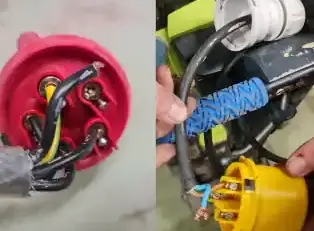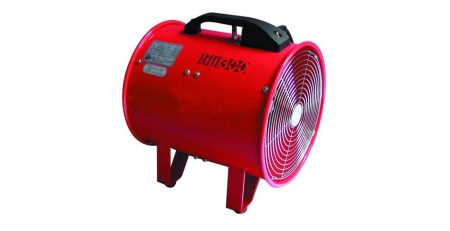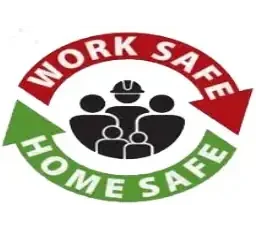Why Safety Equipment Is Important
When all other safety precautions have been taken, safety equipment offers extra workplace security for employees. Knowing why they are essential and understanding their types and functions are necessary to make sure that the safety equipment provides the maximum amount of protection you need.
Continue reading to learn how protective equipment can help improve safety in the workplace.
Reasons Why You Should Safety Equipment in the Workplace
Personal protective equipment, or PPE, protects the wearer from any physical damage or dangers that may be present in the workplace. It is essential because it serves as a safeguard for sectors that are considered to be more dangerous, such as manufacturing and mining.
It is necessary to understand that on-the-job safety equipment must comply with the Personal Protective Equipment Regulation and that it is most comfortable when it is the right size, fit, and height for the consumer.
You may be used to being put in dangerous conditions on the job, but you should never feel as if your physical well-being is in jeopardy. Here are four reasons why personal protective equipment (PPE) is so critical in the workplace:
1. It keeps you from being liable for your injuries.
An individual’s decision not to wear PPE, even though it was issued by their employer, is a common speed bump that workers’ compensation lawyers deal with regularly. This makes determining who is responsible for a workplace illness or accident more difficult.
It differs from case to case, but diligently using all PPE offered on the job is the safest way to guarantee that the employer can bear full responsibility if an accident or illness occurs as a direct result. You should never accept exemptions from wearing PPE for jobs that just take a few minutes.
The worst-case scenario is being held partly liable in court for your occupational sickness or accident due to a failure to use PPE. As an employee, you should have a thorough understanding of which equipment is needed for which tasks, as well as what it is designed to protect. If this isn’t the case, don’t hesitate to speak with a boss or the HR department.
2. It keeps you from failing to protect yourself.
The fact that you feel good at the end of your change does not imply that you have adequately preserved your body. Workplace exposure to various chemicals and substances may have long-term health consequences, with mesothelioma being a prime example. It was estimated that 3,000 Americans were diagnosed with this unusual type of cancer in 2017.
Asbestos fibres were used in the production of products in a variety of fields, and 70-80 percent of these diagnoses were due to asbestos exposure. Working with asbestos requires clear PPE, as well as showering and changing before leaving the workplace, according to current safety regulations. However, there was no connection between asbestos exposure and cancer diagnosis before modern regulation.
As a result, many of these mesothelioma cases occur regularly at a time when we did not know as much about the disease. Workers should take advantage of today’s medical awareness about risk factors and use PPE to protect their health and well-being, both now and in the future.
3. It helps protect your eyes.
One of the most popular (and effective!) types of PPE is safety glasses. This is because any liquid, corrosive or not, and any material, sharp or not, can be harmful to your eyes if it comes into contact with them.
In the UK, approximately 2.4 million eye injuries occur each year, both at work and during leisure activities. Around 50,000 people lost some or all of their eyesight as a result of these injuries. According to some research, protective eyewear like safety goggles should have stopped 90% of these eye injuries.
Since manufacturing, construction, and trade occupations account for 61% of all eye injuries, it’s important to recognise that different types of PPE eyewear are required for different circumstances. Don’t be afraid to ask for replacing your glasses.
4. It improves the quality of your workday.
Consider personal protective equipment (PPE) to be a sort of support device for the task you will be doing as part of your job. It may be slightly more physically demanding or dangerous than your normal desk job, but the equipment is given to make you feel safe.
Weight belts, for example, provide stability for jobs that require heavy lifting, and they may mean the difference between having to go to work the next day with sore muscles and not. Simple trip and fall accidents should be avoided because they can completely ruin someone’s day on the most basic level.
All staff should be able to challenge the efficacy of any given PPE and be informed about the equipment requirements that must be met. Many organisations aim to help workers and reduce workplace hazards with PPEs.
Different Types of Safety Equipment You Can Use
Personal protective equipment is a broad term that applies to a variety of items (such as safety helmets, safety boots and harnesses, eye protection, gloves, high-visibility apparel, and so on) that are intended to protect users from low-, medium-, and high-level hazards. The European Directive (EU) 2016/425 governs this category of goods.
PPE is intended for use in work and home activities, as well as in recreation and sports events. Such practices can bring harm to the user’s body in various ways. A proper form of PPE must be carried or worn to ensure the user’s health and protection in any dangerous situation. In this regard, there are eight different types of personal protective equipment that are essential for users’ protection against hazards.
1. Head protection
Wearing personal protective equipment (PPE) for head protection will help you avoid injury from falling materials or swinging objects. Furthermore, the head protectors are made to keep you from colliding with stationary objects. Some types of head cover, such as caps and hairnets, can also protect against entanglement or scalping when working on machinery.
Helmets, hard hats, bump caps, guards, and accessories are examples of head protection equipment. Construction or building maintenance such as demolition and reconstruction, work in tunnels or excavations, and riding motorcycles are all examples of activities that require you to use head protection equipment.
2. Hand protection
Arms, hands, and fingers are often damaged, so it is important to use hand protective equipment when necessary. Heat, cold, vibrations, burns, sharp object wounds, bacteriological hazards, and chemical contamination may all be protected with hand protection equipment.
Some examples of hand protection equipment include work gloves and gauntlets as well as wrist cuff arm nets.
Hand protection equipment is needed for activities such as constructing and working outside, acting with vibrating equipment, working in hot or cold weather, and acting with chemicals and other potentially dangerous materials.
3. Eye and face protection
The numbers are terrifying! Every day, more than 600 workers in the world suffer from eye injuries. Wearing the proper eye and face safety equipment will prevent such accidents.
Some examples of personal protective equipment for the eyes and face include safety glasses, safety goggles, eye and face shields, eyewear accessories, over specs, and visors.
Wearing eye and face protection is encouraged and recommended when utilising lasers or other power-driven tools, using a pressurised gas or vapour, carrying out welding activities, and working with dangerous materials.
4. Respiratory protection
Breathing equipment, face mask respirators (e.g., full face and half mask respirators), controlled respirators, protective hoods, disposal face masks, alarms, monitors, and other PPEs are included in the respiratory safety category. It is still necessary to have enough instruction on how to use the equipment.
When working with large quantities of gases, powders, dust, or vapours, you are required to use respiratory protection equipment.
5. Hearing protection
Working in an area of high sound levels necessitates the use of hearing protection. Hearing safety should not only be appropriate for the working environment but also provide users with a degree of hygiene and comfort. Providing workers with a variety of protectors and allowing them to choose the ones that best serve them is a good practice.
Hearing protectors include earplugs and hearing protection, meters for noise, sets for communication, and foam for acoustics.
6. Foot protection
Extreme temperatures, crushing, piercing, falling, cutting, chemicals, and electricity are all risks that foot safety equipment is intended to protect against. When users are engaged in construction activities, working in extremely cold or hot conditions, working with chemicals and forestry, or manually handling heavy items, it is usually necessary.
Safety boots and shoes, as well as anti-static and conductive clothing, are examples of foot protection equipment.
7. Body protection
Usually, body protection equipment is required when you are working outside where you need to be protected from various elements. It is also required when you need to ensure user visibility while working in areas with a combination of vehicle (e.g., bikes, motorbikes, cars, and buses) and pedestrian traffic.
Moreover, body protective equipment is used for the safety of users from high temperatures. Workers use them to ensure protection from entanglement, drowning, chemical pollution, and other hazards.
Body protection equipment includes flotation devices, clothing that is appropriate for the weather, clothing with a high level of visibility, harnesses, and many others.
8. Height and access protection
This form of safety equipment is highly specialised, and it typically necessitates extensive training before users are permitted to use it. A responsible individual must regularly check the height and access security equipment to ensure that it is still fit for use and that the health and safety of users are not jeopardised in any way.
The following items may be used as examples of height and access control equipment:
- Fall-detection systems;
- Harnesses for the body;
- Harnesses are being lowered;
- Lifting to safety; and
- Energy absorbers and others.
Reasons Why Safety Equipment May Be Required
Risks still exist even though workplaces are rendered as secure as possible. These dangers include injuries to the head or feet from falling objects, as well as skin damage from corrosive chemicals including acids. Dust and other objects, as well as liquid splashes, can irritate the eyes.
Working in a very hot or cold environment puts one at risk of injury or illness, so thermal gloves or aluminized gloves are important for protecting the hands from temperature extremes.
Tips on Choosing the Right Safety Equipment
Before purchasing safety equipment, think about whether it is appropriate for the job, whether it provides adequate security, and what kind of training and maintenance is needed. Products should always be labelled as complying with applicable laws and regulations.
Users, rather than supervisors, should choose their equipment since this means that it suits correctly and is not too heavy. If multiple pieces of PPE are needed, it is also critical that they fit together, as a helmet can interfere with the fit of goggles.
Ways to Store and Maintain Your Equipment Properly
When safety equipment is not in operation, it must be stored appropriately to satisfy storage constraints. It must be kept clean and in good working order at all times, or it risks becoming redundant in a short time. One effective measure will be to appoint people to be in charge of inspecting the equipment’s protection regularly.
Employees need cohesive and rigorous training to ensure that they use safety equipment correctly in their respective workplaces, in addition to having the appropriate safety equipment to help reduce risks. Nonetheless, protective equipment, along with proper instruction, regulations, and labelling, is the safest way to prevent workplace injury.
Where to Buy Quality Safety Equipment in the UK
Because of the existence of certain industries, even though every precaution is taken to protect workers from damage, there is always a risk of injury. So, employees must have the appropriate safety equipment when working.
At Multi-Hire Power Tools Limited, our goal is to reduce the number of people suffering from work-related injuries and illnesses. As such, we offer a range of quality safety equipment at competitive prices. We also assist customers in selecting the right products for them. Call 03455 613633 for enquiries or visit our online shop to order!






